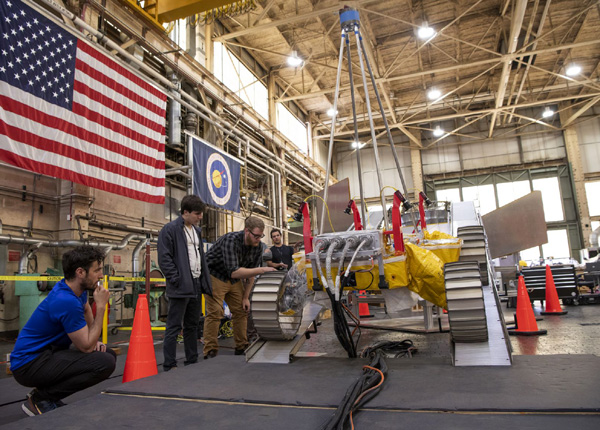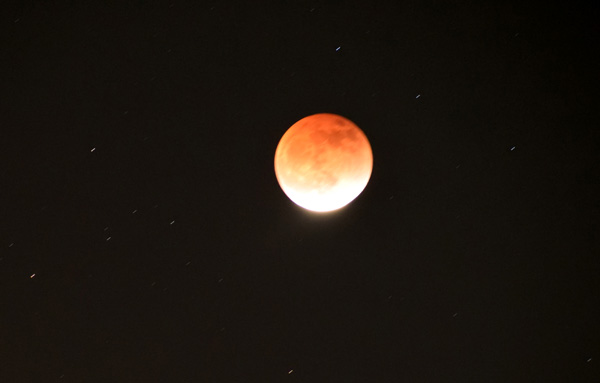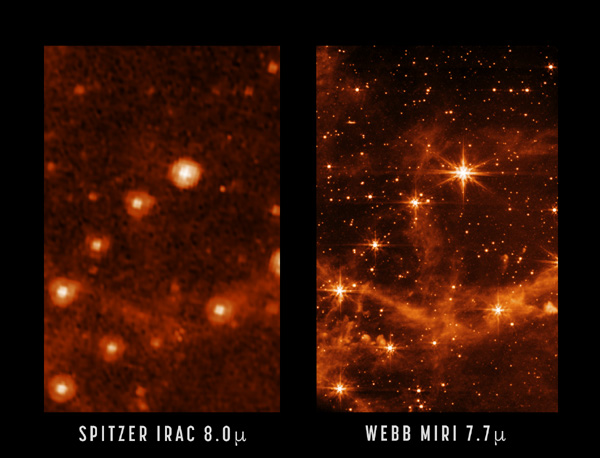 Event Horizon Telescope Collaboration
We Got It! Astronomers Reveal First Image of the Black Hole at the Heart of Our Galaxy (Press Release)
Washington, D.C. –
Event Horizon Telescope Collaboration
We Got It! Astronomers Reveal First Image of the Black Hole at the Heart of Our Galaxy (Press Release)
Washington, D.C. – During a press conference hosted by the U.S. National Science Foundation with the Event Horizon Telescope Collaboration in Washington, D.C. today, astronomers unveiled the first image of the supermassive black hole at the center of our own Milky Way galaxy. This result provides overwhelming evidence that the object is indeed a black hole and yields valuable clues about the workings of such giants, which are thought to reside at the center of most galaxies. The image was produced by a global research team called the
Event Horizon Telescope, or
EHT, Collaboration, using observations from a worldwide network of radio telescopes.
The image is a long-anticipated look at the massive object that sits at the very center of our galaxy. Scientists had previously seen stars orbiting around something invisible, compact, and very massive at the center of the Milky Way. This strongly suggested that this object — known as Sagittarius A*
(Sgr A*, pronounced "sadge-ay-star") — is a black hole, and today’s image provides the first direct visual evidence of it.
Although we cannot see the black hole itself, because it is completely dark, glowing gas around it reveals a telltale signature: a dark central region
(called a “shadow”) surrounded by a bright ring-like structure. The new view captures light bent by the powerful gravity of the black hole, which is four million times more massive than our Sun.
“We were stunned by how well the size of the ring agreed with predictions from Einstein’s Theory of General Relativity," said EHT Project Scientist Geoffrey Bower from the Institute of Astronomy and Astrophysics, Academia Sinica, Taipei. "These unprecedented observations have greatly improved our understanding of what happens at the very center of our galaxy and offer new insights on how these giant black holes interact with their surroundings.” The EHT team's results are being published today in a special issue of
The Astrophysical Journal Letters.
https://iopscience.iop.org/journal/2041-8205/page/Focus_on_First_Sgr_A_Results
Because the black hole is about 27,000 light-years away from Earth, it appears to us to have about the same size in the sky as a donut on the Moon. To image it, the team created the powerful EHT, which linked together eight existing radio observatories across the planet to form a single “Earth-sized” virtual telescope. The EHT observed Sgr A* on multiple nights, collecting data for many hours in a row, similar to using a long exposure time on a camera.
The breakthrough follows the EHT Collaboration’s
2019 release of the first image of a black hole, called M87, at the center of the more distant Messier 87 galaxy.
The two black holes look remarkably similar, even though our galaxy’s black hole is more than a thousand times smaller and less massive than M87. "We have two completely different types of galaxies and two very different black hole masses, but close to the edge of these black holes they look amazingly similar,” says Sera Markoff, Co-Chair of the EHT Science Council and a professor of theoretical astrophysics at the University of Amsterdam, the Netherlands. "This tells us that General Relativity governs these objects up close, and any differences we see further away must be due to differences in the material that surrounds the black holes.”
This achievement was considerably more difficult than for M87, even though Sgr A* is much closer to us. EHT scientist Chi-kwan
(‘CK’) Chan, from Steward Observatory and Department of Astronomy and the Data Science Institute of the University of Arizona, U.S., explains: “The gas in the vicinity of the black holes moves at the same speed — nearly as fast as light — around both Sgr A* and M87. But where gas takes days to weeks to orbit the larger M87, in the much smaller Sgr A* it completes an orbit in mere minutes. This means the brightness and pattern of the gas around Sgr A* was changing rapidly as the EHT Collaboration was observing it — a bit like trying to take a clear picture of a puppy quickly chasing its tail.”
The researchers had to develop sophisticated new tools that accounted for the gas movement around Sgr A*. While M87 was an easier, steadier target, with nearly all images looking the same, that was not the case for Sgr A*. The image of the Sgr A* black hole is an average of the different images the team extracted, finally revealing the giant lurking at the center of our galaxy for the first time.
The effort was made possible through the ingenuity of more than 300 researchers from 80 institutes around the world that together make up the EHT Collaboration. In addition to developing complex tools to overcome the challenges of imaging Sgr A*, the team worked rigorously for five years, using supercomputers to combine and analyze their data, all while compiling an unprecedented library of simulated black holes to compare with the observations.
Of those supercomputers, the analysis in paper five includes nearly 80 million CPU hours on the NSF Frontera supercomputer and 20 million CPU hours on the NSF Open Science Grid. NSF’s South Pole Telescope
(SPT) and the international Atacama Large Millimeter/submillimeter Array
(ALMA), a telescope managed under NSF’s National Radio Astronomy Observatory
(NRAO), were two of the seven telescopes used to collect the image data in 2017.
Scientists are particularly excited to finally have images of two black holes of very different sizes, which offers the opportunity to understand how they compare and contrast. They have also begun to use the new data to test theories and models of how gas behaves around supermassive black holes. This process is not yet fully understood but is thought to play a key role in shaping the formation and evolution of galaxies.
“Now we can study the differences between these two supermassive black holes to gain valuable new clues about how this important process works,” said EHT scientist Keiichi Asada from the Institute of Astronomy and Astrophysics, Academia Sinica, Taipei. “We have images for two black holes — one at the large end and one at the small end of supermassive black holes in the Universe — so we can go a lot further in testing how gravity behaves in these extreme environments than ever before.”
Progress on the EHT continues: a major observation campaign in March 2022 included more telescopes than ever before. The ongoing expansion of the EHT network and significant technological upgrades will allow scientists to share even more impressive images as well as movies of black holes in the near future.
“This image is a testament to what we can accomplish, when as a global research community, we bring our brightest minds together to make the seemingly impossible, possible. Language, continents and even the galaxy can’t stand in the way of what humanity can accomplish when we come together for the greater good of all. This is a historic moment where we see the black hole at the heart of our Milky Way as a capstone achievement following decades of intense curiosity-driven discovery research. NSF is proud to be an international partner that invests in this innovative research and the infrastructure that makes such fantastic discoveries possible,” said NSF Director Sethuraman Panchanathan.
Source: NSF.Gov
****
















